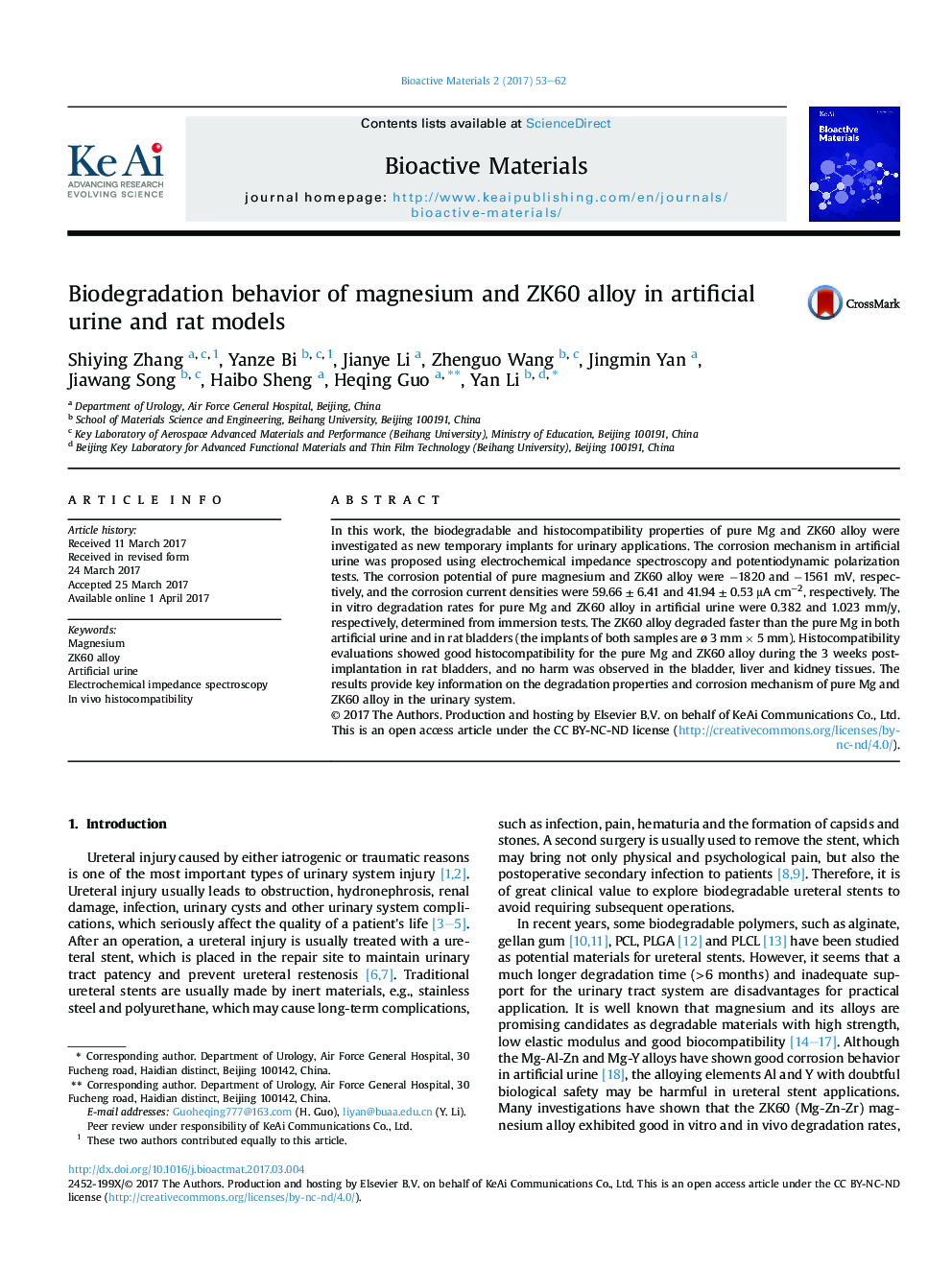| Article ID | Journal | Published Year | Pages | File Type |
|---|---|---|---|---|
| 5431469 | Bioactive Materials | 2017 | 10 Pages |
â¢ZK60 obtained loose corrosion product layer with poor corrosion resistance in AU.â¢ZK60 showed a faster degradation rate than Mg in artificial urine and bladder of rat.â¢Mg and ZK60 alloy showed good histocompatibility for the bladder model of rat.
In this work, the biodegradable and histocompatibility properties of pure Mg and ZK60 alloy were investigated as new temporary implants for urinary applications. The corrosion mechanism in artificial urine was proposed using electrochemical impedance spectroscopy and potentiodynamic polarization tests. The corrosion potential of pure magnesium and ZK60 alloy were â1820 and â1561 mV, respectively, and the corrosion current densities were 59.66 ± 6.41 and 41.94 ± 0.53 μA cmâ2, respectively. The in vitro degradation rates for pure Mg and ZK60 alloy in artificial urine were 0.382 and 1.023 mm/y, respectively, determined from immersion tests. The ZK60 alloy degraded faster than the pure Mg in both artificial urine and in rat bladders (the implants of both samples are ø 3 mm Ã 5 mm). Histocompatibility evaluations showed good histocompatibility for the pure Mg and ZK60 alloy during the 3 weeks post-implantation in rat bladders, and no harm was observed in the bladder, liver and kidney tissues. The results provide key information on the degradation properties and corrosion mechanism of pure Mg and ZK60 alloy in the urinary system.
Graphical abstractDownload high-res image (475KB)Download full-size image
